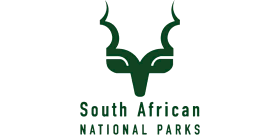 New national park for Eastern Cape
New national park for Eastern Cape
South African National Parks (SANParks) and the World Wide Fund for Nature (WWF) are working on establishing a high-altitude national park in the mountains of the Eastern Cape near to the Lesotho border.
The NE Cape Grasslands National Park is expected to encompass an area of roughly 30,000 hectares, starting west of Maclear and stretching along the southern-most reaches of the mountainous Lesotho border. Naude's Nek pass, South Africa's highest lying road at over 2,500m, will dissect the park east of Rhodes, according to initial plans released by SANParks and the WWF on Thursday.
"The
establishment of this national park will mark a new and innovative
approach to protected area expansion as it will be located within a
working agricultural landscape," said SANParks Acting CEO, Dr Luthando
Dziba.
Landowners will have the opportunity to incorporate their land in the park on a voluntary basis. In doing so, they'll have an opportunity to benefit from financial incentives for formally protected private and communal land.
Working with these landowners remains
key to establishing an "ecologically, economically, and socially
sustainable consolidated protected area" according to Dziba.
In addition to the area being rich in biodiversity and endemic species, it also aims to incorporate the Eastern Cape Drakensberg Strategic Water Source Area which provides 100% of Umtata's water and is currently unprotected.
While
the park's focus will be on protecting South Africa's grasslands, which
have been identified as a national conservation priority, it will also
bring much-needed employment to the area. This will come in the form of
alien plant clearing and wetland restoration.
SANParks added that it "aims to raise significant government funding for the restoration and maintenance of the landscape for water security."
"…and because of its rugged, unspoilt landscape, the area has rich potential for adventure and cultural tourism which could help to build an all-year-round tourism industry, further unlocking potential jobs," said Dziba.
"The declaration of a national park
will also be a motivation for the inclusion of this area into the
adjacent Drakensberg World Heritage Site."
The area will include input from three traditional councils – the Chief Lebana Council, Chief Zibi Council, and Umzimvubu Council – according to a development proposal shared by the WWF. Privately protected areas will run along the Lesotho border north of Mount Fletcher, while State protected areas are concentrated around Ongeluksnek Wildlife Reserve.
"The beauty of this model is that biodiversity conservation and ecological management will be done in partnership with those who live and work in this area, while allowing them to continue deriving benefits from their land through sustainable agriculture and other compatible land uses," said Dr Morne du Plessis, CEO of WWF South Africa.
While three expansion stages are planned, SANParks has not yet revealed a timeline for the park's official creation.
